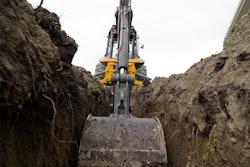
Changes to the Davis-Bacon and Related Acts have gone into effect, the first update to prevailing-wage regulations in more than 40 years.
Legal challenges from construction industry groups are anticipated to get underway soon after the new rules took effect October 23. Multiple concerns were expressed from within the industry about the alleged disregard of stakeholders' comments on the rule, which was proposed in March 2022.
The Associated General Contractors of America objected to numerous provisions in the proposed rule, especially those that would expand “site of work” provisions to include more off-the-jobsite workers under Davis-Bacon requirements.
However, according to AGC officials, rather than resolving the objections raised, the DOL added more uncertainty about truck driver coverage and contractors using their material supply operations on covered projects, among other things.
An online note to members reminding them of the rule going into effect and offering general information also indicates that AGC is preparing a narrowly tailored lawsuit to challenge such provisions in the final rule. AGC says DOL exceeded the authority Congress granted it under the Davis-Bacon Act and acted in an arbitrary and capricious manner.
A timeline on filing of the lawsuit was not specified but noted as being “imminent.” Members were encouraged to prepare to comply with the rule.
Contractors currently bidding contracts covered under Davis-Bacon and Related Acts are encouraged to consider changes to existing requirements as well as new ones.
All contracts entered after October 23 will be subject to the new rule’s provisions. Additionally, in certain situations, the rule may apply to existing contracts. This includes contracts changed to cover substantial Davis-Bacon-covered work not within the scope of the original contract and for ongoing contracts not tied to the completion of a particular project.
The Associated Builders and Contractors had also opposed the rule change. ABC denied the claim that workers are not paid fairly, citing a May 2022 study released by the Beacon Hill Institute. The study said the Davis-Bacon Act costs taxpayers an extra $21 billion a year, increases the cost of construction projects by at least 7.2%, and inflates construction workforce wages by 20.2% compared to local market averages.
ABC Vice President of Regulatory, Labor, and State Affairs Ben Brubeck called the rule “another Biden administration handout” that falls on the backs of taxpayers and small businesses when the rule was finalized in August.
"Unfortunately, the DOL's final rule disregards the feedback of ABC contractors, construction industry stakeholders, and thousands of small businesses urging the withdrawal of this unnecessary, costly, and burdensome regulation,” he said in a statement released Tuesday.
What's new
The new rule requires payment of locally prevailing wages and fringe benefits on the $200 billion of federally funded or assisted construction projects contained in the $1.2 trillion infrastructure law, the CHIPS and Science Act, and the Inflation Reduction Act.
The prevailing wage rate will be equivalent to the wage paid to at least 30% of workers in the locality rather than the previous threshold of 50%. According to Biden administration officials, the new calculation makes it “more likely” workers are paid a true prevailing wage.
Also, the rule alters the period update of prevailing wage rates. Currently, the Department of Labor surveys contractors and other parties to update its prevailing wage rates. As printed, the final rule gives the DOL’s Wage and Hour Administrator the express authority to adopt prevailing wages determined by state and local governments, issue wage determinations for labor classifications where insufficient data was received, and update outdated wage rates.
In addition, enforcement of the rule will be enhanced with a new anti-retaliation provision in contract clauses.
The provision is intended to protect workers who raise concerns about being fired or punished and reportedly strengthens DOL’s ability to withhold money from a contractor to pay employees their lost wages.















